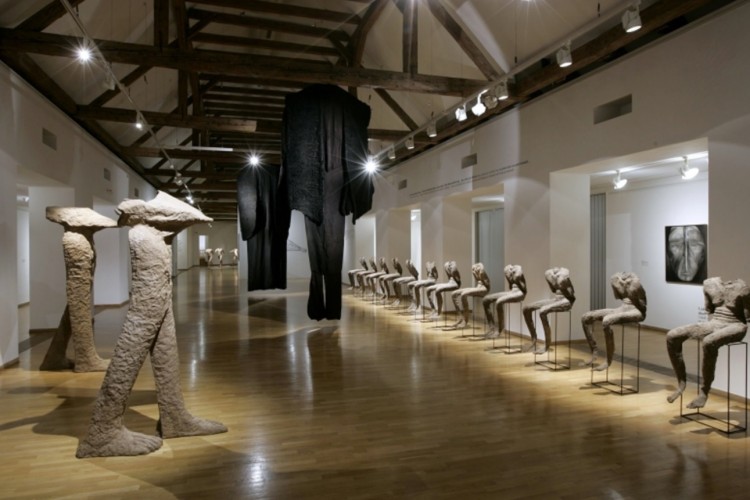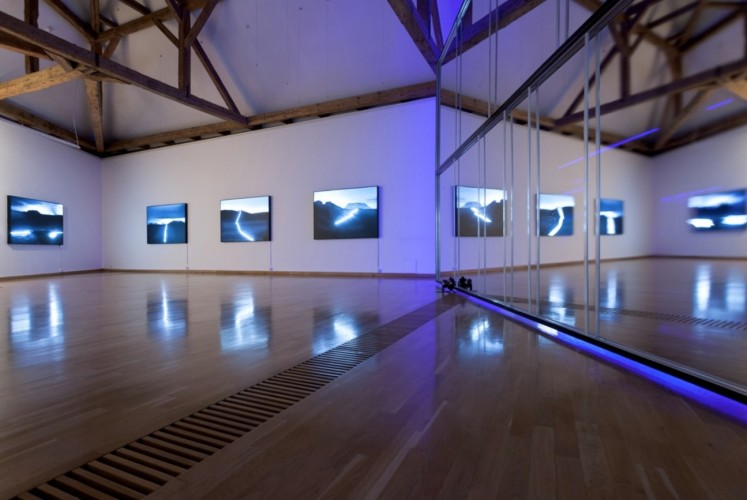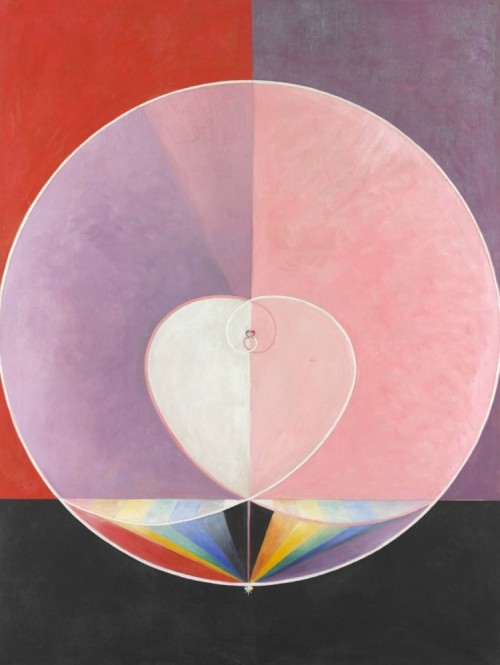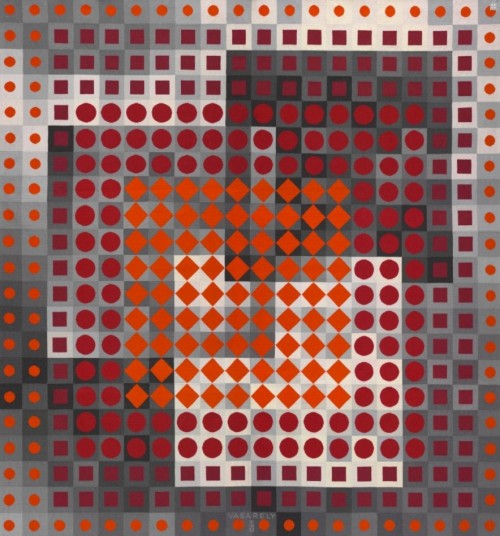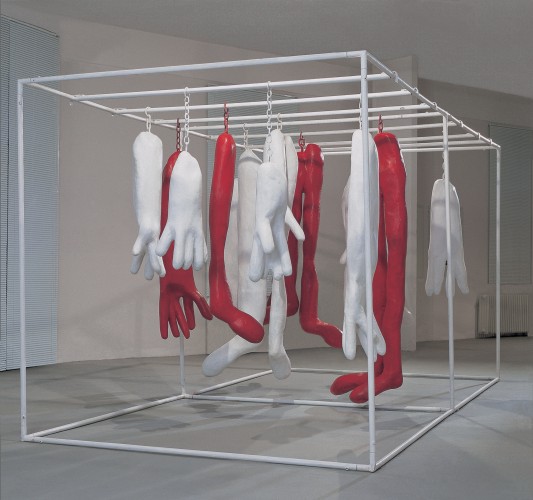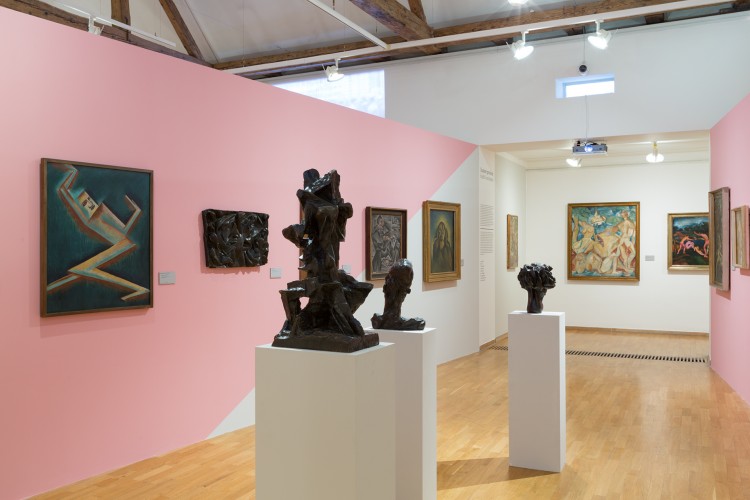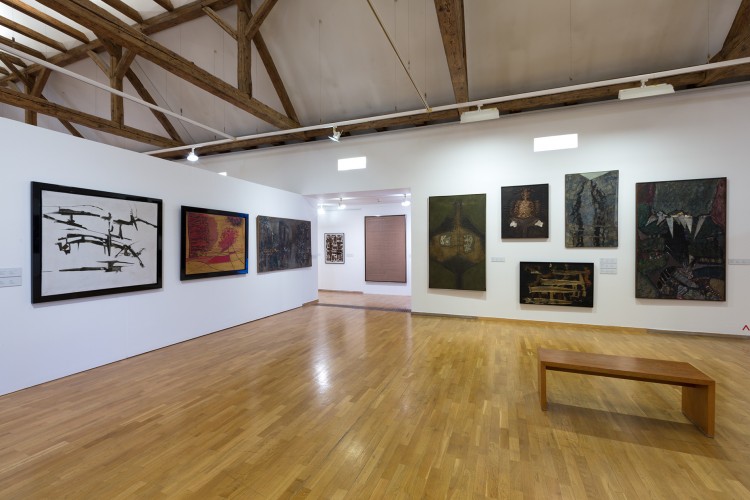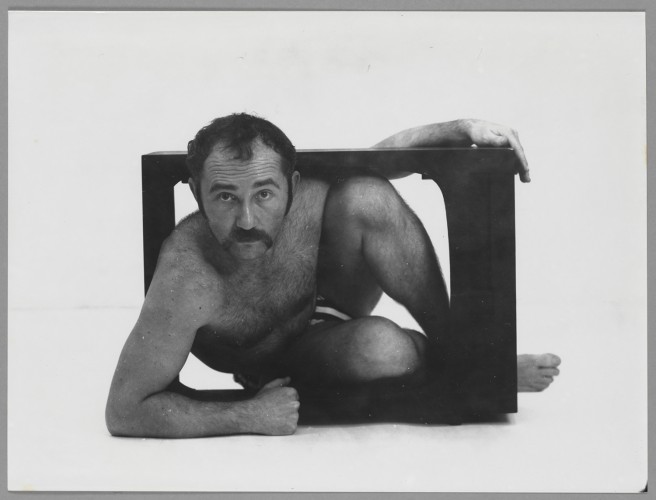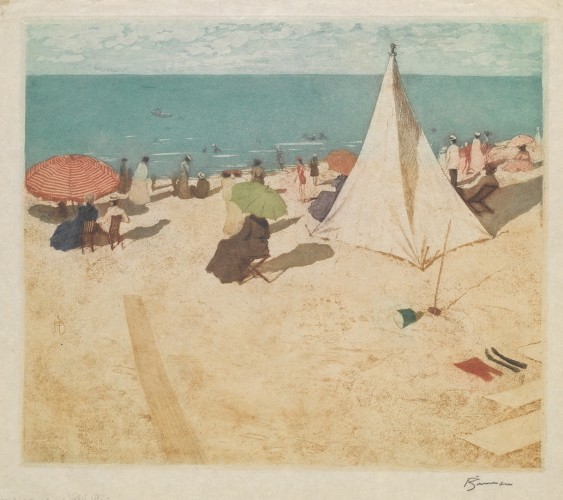Exhibitions
PERMANENT EXHIBITION
Olomouc in Central Europe and Central Europe in Olomouc
The current permanent exhibition of the Museum of Modern Art is called The Century of Relativity. It presents the closer Central European region, especially in the second half of the 20th century. At the same time, its focused on fundamental tendencies and key authors, through whose works it creates a plastic network of the cultural life of the region. The central motif of the planned exposition for the new SEFO building is the search for and verification of the identity of Central Europe.
Some authors call the European 20th century a "crisis" - they turn mainly to historical experience (Holocaust, totalitarian regimes), but this tension can also be perceived geographically. The Central European area is on the border of the identity of the West and the East and can be understood as the periphery of both centres, which on the other hand brings features that make it paradoxically permanent.
We understand Central Europe as a geographical area of the original Habsburg monarchy - its historical context represents a certain temporal and cultural anchorage. Therefore, we understand the Forum building and the future permanent exhibition as a certain centre or a kind of bolt. Here originates the combination of large and small history, the region and the global context, where we also use a system of basic polarities to deepen it.
There are three levels we follow within the idea of the Forum. The first is the representative one - it represents large works from the collections of the institution, respectively the long-term loans presenting the "global" character of the region (Victor Vasarely, Magdalena Abakanowicz, Václav Cigler, Jozef Jankovič, Tadeusz Kantor, Jerzy Kujawsky, László Fehér, Dóra Maurer, etc.). Examples are also thematic or stylistic areas (Devětsil, MA, Kraków neo-avant-garde, etc.), genres and specific collections (authors book, etc.). The second level is contextual - it assumes a more detailed interest in history, political and social connotations, focuses on specific crisis moments. And finally, there is the third, complex level. At this level, the visitor should already be able to (re)construct the identity of the region. While the first level focuses on works of art, on the relationship to the original, aesthetic experience and evaluation, the second is more cultural-historical. The third level presupposes an intense interest in both and the ability to distinguish between them.
SHORT TERM EXHIBITIONS
Přestože nová budova Středoevropského fóra ještě nestojí, Muzeum umění Olomouc již uspořádalo celou řadu výstav, které dokládají jeho dlouhodobý zájem o výtvarnou kulturu střední Evropy a její mapování. V dramaturgické sérii výstav k projektu SEFO jsme představili jak výrazné a světoznámé osobnosti, tak oblasti a témata, která dosud unikala odborné pozornosti.
Although the new building of the Central European Forum SEFO does not yet stand, the Olomouc Museum of Art has already organized a number of exhibitions that present its long-term interest in the art of Central Europe and its survey. In the dramaturgical series of exhibitions for the SEFO project, we presented both prominent and world-famous personalities, as well as areas and topics that have so far escaped professional attention.
Selection from SEFO exhibitions:
2022
Home and Abroad
BOSCH+BOSCH GROUP
2021
Jan Pamuła | Pioneer of Computer Art in Poland
The SEFO 2021 Triennial
2020
Post.Print; Photoblock | Central Europe in photo books
2019
Crime scene: Pécsi Mühely | Hungarian Performing Art from the Collections of Balász Szluka and Olomouc Museum of Art; Václav Cigler | Drawings; Neighbors in the book; Victor Vasarely | TER-F2
2018
Years of Disarray 1908–1928; Abstraction.PL
2017
Adolf Hölzel | Drawings; Fascination with reality; Jozef Jankovič | Flow of Time; Monogrammist T.D | Fragment.D
2016
By charcoal, paintbrush, scalpel…; Rustle of Angel Wings
2015
Views into the collections IV. | Victor Vasarely | New Acquisition I, II; Aenigma | A hundred years of anthroposophic art; Alfred Lenica | Colour – Gesture – Subconsciousness; Zbyněk Sekal | Things Are Moving Forward Slowly; To Catch Up and Get Ahead | Czechoslovak and Polish design of the 1960s
2014
Ludmila Padrtová | The First Lady of Czech Abstraction | 1951-2013 Works; Publisher Rainer Pretzell; Ivan Theimer | Via Lucis; Karel Malich | Inner Light
2013
Jan Švankmajer | Dimensions of Dialogue; Magdalena Jetelová | (DES)ORIENTATION? | Projects from 1982–2013; A World before a Catastrophe | Krakow’s Jews between the World Wars; Andrzej Pawłowski | Genesis / Cineforms; The central attraction | Central graphic second half of the 20th century and the authors book
2012
Architecture is an Attack on Good Taste! | Olomouc Central European Forum V; Civilised Illusions | Collection of Photography of the Olomouc Museum of Art; František Skála | Museum; Josip Plečnik | Churches; From Titian to Warhol | Olomouc Museum of Art 1951–2011
2011
Magdalena Abakanowicz | Life and Work; Do Not Sit Down This Time | Seating Furniture from the Museum Collections; Olomouc Central European Forum IV | Slovakia | Slovak Art from the Collections of the Olomouc Museum of Art; Dalibor Chatrný | So, Now, Here; Zittau Collections of Old Art and Wolfgang Sterling’s Collection
2010
Milan Kunc | Amor and Psyche; Olomouc Central European Forum III | Hungary; Zdeněk Sýkora | Colour and Space
2009
Olomouc Central European Forum 2009; Turning pages | Modern book culture in the collections of the Olomouc Museum of art; Central European Forum Olomouc | Architectural study
2008
Outburst | Expressionist tendencies in Central Europe 1903–1936; No cage for me! | Czech and Slovak Art 1970–1989 from Collections of Olomouc Museum of Art
2007
Victor Vasarely | From the Collections of the Janus Pannonius Museum in Pécs


